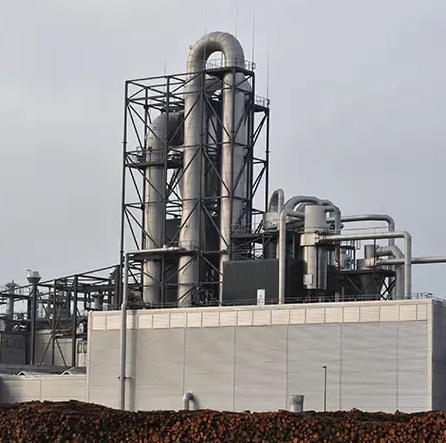Pulp fiction or fact? Turning the polluting paper pulp industry sustainable
The paper pulp industry often gets a bad reputation for its environmental impact, mainly due to deforestation and high energy consumption. Fortunately, Manish Verma, the Business Development Director at Swedish Exergy, explained how it is possible to curb environmental risks and told us about the ongoing innovations in the industry.

Looking towards the future: utilizing paper slush and bamboo
Swedish Exergy collaborates with institutes and clients to contribute to scientific advancements in paper manufacturing. Beyond CO2 reduction, they explore sustainable solutions for processing residue, such as paper sludge.
“One of the things we are looking at is seeing if we can make the paper sludge into a product. If not, we can combust the dried sludge to create energy, heat, or power. Another alternative is to use pyrolysis to produce Biochar. So instead of going to landfills, you can give the sludge a second life,” explains Manish.
Additionally, along with the conventional wood-based pulps, Swedish Exergy and its partners are working with and testing pulp produced with alternative feedstocks like wheat or bamboo.
“Bamboo is one of the fastest-growing plants in the world, it’s grass. So, if we can use it for paper pulp, then that’s just better for the environment as well,” emphasizes Manish.
Manish highlights that environmental concerns should be taken seriously: “No matter what we think in this world, we have an actual water shortage.” While high water consumption is integral to paper pulp production, its removal during the drying process consumes high thermal energy and leads to high CO2 emissions.
A closed-loop system reduces energy and water consumption
With traditional drying methods, little to nothing gets recycled in the process, and it is quite energy-consuming. Swedish Exergy has thus opted to use superheated steam in their ExergyPSSD® dryer, which features a closed-loop system.
Manish explains the process, “All the moisture in the wet paper pulp becomes steam in the steam dryer. That energy is not wasted but recovered. It can be used in many other processes within a paper pulp manufacturing facility. It can also be sold as heat energy, used in a carbon capture process, or used to produce green electricity.
Furthermore, integrating an MVR machine allows the recycling of generated steam from the ExergyPSSD® by compressing it at higher pressure and using it as heat energy for the dryer, eliminating the need to burn biomass or any other fuel and thereby saving water and energy, and creating zero emissions, if the electricity is from green sources such as wind and solar.
Shifting from traditional methods to superheated steam drying, Manish asserts, “If you can remove your most energy-intensive process, you can reduce the energy requirement by up to 85%. That alone is a huge win for the industry”.
We’re thrilled to see how the research of Swedish Exergy and its partners reshapes the paper pulp landscape. What they’ve done so far offers an exciting glimpse into the future, and we can’t wait to see more!

